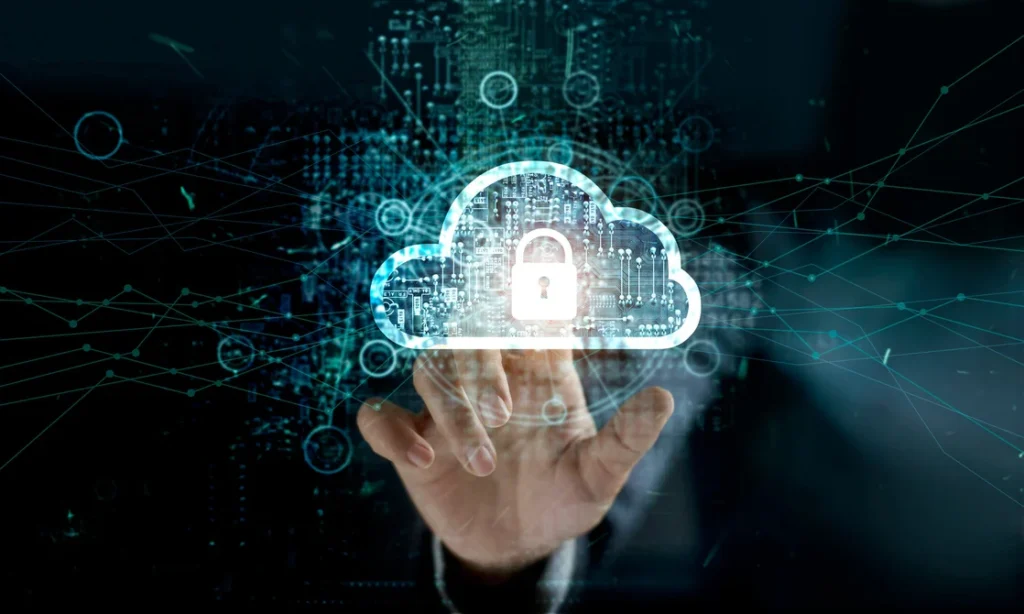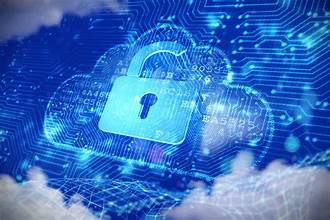Setting up proper cybersecurity defenses while companies move to the cloud is increasingly necessary for keeping sensitive data safe and preserving business integrity. Cloud security is an extensive set of practices and technologies applied to cloud-based systems, applications, and data protection against cyber threats.
This comprehensive guide looks into key components of cloud cybersecurity, covering challenges, strategies, and best practices that companies can do to ensure appropriate protection for their cloud-based assets.
Understanding Cloud Cybersecurity
Definition and Importance
Cloud cybersecurity refers to practices and procedures that help safeguard cloud computing environments against cyber-attacks. Securing all data stored on the clouds, various applications run on the clouds, and services offered on the cloud is what is entailed here. Cloud cybersecurity is a very vital aspect; for cyber-attacks mean loss of enormous New Value, clientele, and credibility and processed several legal implications.
Effective cloud cybersecurity requires that a combination of technologies, policies, and best practices are in place for the security of cloud infrastructure. These safeguards include encryption, identity and access management, continuous monitoring, incident response planning, and others. One among the most resilient ways of safeguarding of security is through Cloud Detection and Response tools. Also, regulations have to be observed by organizations, firstly to protect sensitive information and secondly to build trust with customers and stakeholders.
The more pervasive and complicated cloud computing becomes in adoption, the stronger cloud cybersecurity is in mitigating risks related to cyber threats.
Challenges of Cloud Cybersecurity
Despite the numerous benefits that cloud computing brings along with its adoption, there are specific challenges presented by this technology. Key challenges involve the shared responsibility model, whereby a client and a cloud service provider have responsibility for security. It is very important to be clear about who is responsible for which areas to ensure everything is covered.
- Data Privacy and Compliance: The complex issues of data sovereignty and jurisdiction make compliance with regulations like GDPR, HIPAA, and CCPA more difficult in the cloud.
- Complexity and Visibility: Cloud environments are dynamic and elastically scalable, making them fast and, hence, hard to keep up with in terms of visibility for effective security management.
- Third-Party Risks: The risks coming from third-party cloud services concern the security practices the vendors have implemented and vulnerabilities that may exist within those services.
Key Strategies for Cloud Cybersecurity
Implement a Zero Trust Architecture.
Zero Trust is a security model architected on the basis of the principle that no entity, whether inside or outside a network, can be trusted by default. This would translate to the implementation of a Zero Trust architecture in terms of continuous authentication, verification of identity, trustworthiness of every user and device, strict access controls, least privilege to reduce the chances of unauthorized access, continuous monitoring of network activities, logging of activities, and advanced threat detection and response technologies.
Key Components:
Continuous Verification: It means, at regular intervals, verification of users and devices identification and integrity.
Least Privilege Access: provides required access to users and applications with the minimum amount of access the application requires or the user needs to perform the specific task.
Micro-Segmentation: Network segmentation technique that further breaks down the network into smaller segments. This allows security professionals to limit the potential spread in case of a breach.
Data Encryption
One of the basics of cloud cybersecurity is encryption—the assurance that your data is still safe even after it has been hijacked or accessed without your consent. Strong protocols of encryption for both resting and transit data protect them from any unauthorized access or breached data.
Key strategies are:
- Data-at-Rest Encryption: Stored data is encrypted to protect it against unauthorized access.
- Transit Encryption: Protection of data during transfer from interception.
Key Management: Adoption of a robust mechanism for key management that ensures the safe storage and management of keys used for encryption.
Identity and Access Management

IAM solutions refer to who can access which resources and what they can do. Best practices in IAM include:
- Multi-Factor Authentication (MFA): Ensure that access to cloud services is granted based on more than just one mode of verification.
- Role-Based Access Control: Permissions granted based on roles to ensure appropriate levels of access are accorded.
- fauna reviews of access to make sure that the access permissions are in the right job roles and responsibilities.
Continuous Monitoring of Threat Detection
Incidences of security breaches may be timely detected and mitigated as a result of continuous monitoring. Advanced tools are applied to monitor network, systems’ behaviors, and users’ activities.
Among good practices are:
SIEM: Collecting and analyzing security data from varied sources, providing real-time insights about security.
- IDPS: This countermeasures to various types of malicious activities carried out within the cloud environment.
- Automated Response: Fast response to threats upon detection using automation.
Compliance and Governance
Compliance and Governance form an integral component of cloud cybersecurity. A company shall ensure compliance by avoiding legal penalties, building trust with its customers and stakeholders, and showing commitment towards protecting sensitive customer data.
Criteria:
Compliance Audits: Cloud environments should be audited regularly to ensure compliance with all industry standards and regulations.
Policy Management: Setting up security policies related to cloud usage and data handling and their implementation.
Third-Party Risk Management: Ensuring that third-party vendors’ security practices are aligned with company standards.
Good Practices for Cloud Cybersecurity
Right Choice of Cloud Service Provider
Choosing the right cloud service provider with potent security measures is highly essential. This involves
- Security Certifications: It checks if the CSP has obtained security certifications such as ISO 27001, SOC 2, and FedRAMP.
- Security Features: The security features of the CSP need to be assessed; these features include encryption, IAM, and monitoring tools.
- Service Level Agreements: SLAs review that the availability and security needs of the company are met.
Robust Authentication and Authorization
The best practices in this include:
- Password Policy: Strong password policies are implemented, including password complexity and timely updates.
Biometric Authentication: Enhance security by incorporating biometric authentication methods.
Single Sign-On: Implement SSO with ease of access management, without compromising on advanced security controls.
Regular Security Assessments and Penetration Testing

Regular assessments shall be carried out for detecting and rectifying insecurities. Best practices include:
Vulnerability Scanning: Run regular scans for potential vulnerabilities and resolve them on a priority basis.
Penetration Testing: Simulated attacks to detect the presence of weaknesses
Security Audit: Periodic auditing is necessary to confirm that all policies and regulations under compliance are adhered to.
Data Backup and Disaster Recovery
Strong recovery strategies spell continuity of business conduct. These entail:
- Periodic Backups: Application execution of regular backups and storing them in safe locations.
- Planning for Disaster Recovery: Estimates with plans on fast recovering data and other systems as well, and testing these plans too.
- Backup Encryption: This refers to encryption of backup data at rest and in transit.
d) Employee Education and Training
Human error explains most security incidents. Training users on cloud security best practices minimizes this risk.
Best practices include: Security Awareness Training; this takes the user through common threats and related best practices on a regular basis. Phishing Simulations—run simulations to test and improve responses to phishing attempts. Role-specific training provides training on the specific security implications related to certain job functions.
Advanced Cloud Cybersecurity Technologies
Artificial Intelligence and Machine Learning
Cloud cybersecurity has become very useful with the integration of AI and ML. Key applications include:
Anormal Detection: AI and ML help in detecting patterns indicative of security threats.
Predictive Analytics: Analytics help in studying the data to predict the incidents that would occur and rectify the weaknesses.
Automated Threat Response: Automatic response to the threats detected by using AI.
Enhancing Blockchain Security
Blockchain technology holds certain potential value, including:
Data integrity: The immutable ledger ensures the integrity of data.
•-Decentralized Security: Minimizing single points of failure through decentralized security
- Smart Contracts: Automating the processes of security and making compliance compulsory
Sea Access Service Edge (SASE)
SASE integrates network security and wide-area networking. These are the primary advantages attributed to it:
- Unified Security: It offers a unified security architecture
- Reduced Complexity: It provides reduced security management complexity by consolidating functions
- Improved Performance: It offers better performance as a result of optimized routing of traffic and reduced latency
Conclusion
Flexibility and scalability bring about their own set of advantages but pose new security challenges. Robust cybersecurity strategy should incorporate state-of-the-art technologies in threat detection by way of AI and machine learning, including incident response. Likewise, blockchain’s architecture is decentralized, fostering high integrity in data.
This has to be complemented by developing a sort of security-aware culture in people through constant education and training. Regular training sessions would go a long way in reducing the potential problems resulting from human error. Having incident response planning and testing these plans gives readiness for any eventual security incidents.
Even with the potential for change in cloud technologies, minimum compliance requirements—such as GDPR, HIPAA, or PCI DSS—must be followed for legal and reputational reasons. Planned audits and adherence to governance practices reflect a sincere concern for security in the eyes of customers and stakeholders.
The essence of cloud cybersecurity is, therefore, a continuous process and requires commitment to incessant improvement. A multifaceted approach, which involves technological innovation, stringent policies, and proactive education, can help an organization in building a secure cloud environment.

